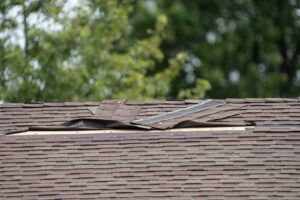Different Roof Ventilation On This Roof
Here’s a list of the most common roof vents used while roofing in San Antonio.
1) Ridge Vent
Used at the peak (ridge) of roofs. This usually needs a two inch opening throughout the ridge line.
2) Slant Back
Typically installed near the peak of the roof below the ridge line about 2 feet. This vent usually has a 1 sqft opening for venting.
3) Round Dome Vent \ mushroom vent
Typically installed near the peak of the roof below the ridge line about 3 feet. This vent usually has a more than 1sqft opening for venting.
4) Intake Eave Vent
This vent is used in substitution to soffit ventilation. This vent is installed near the eave line with an opening line of two inches.
How To Calculate Attic Ventilation
Determine sqft or attic space.
Don’t calculate total house sqft, only calculate attic area sqft to ventilate.
Follow Ventilation Requirements:
You can use 1 of 2 ways to calculate how much ventilation opening you need.
1) 1/300: per 300 sq ft of area you will need 1 sq ft of open space.
2) 1/150: per 100 sq ft of area you will need 1 sq ft of open space.
Roof Vent Example: for this example we’re going to use the 1/300 ration to calculate.
For an 1100 sq ft attic space using 1/300, divide 1100 by 300 = 3.666
Multiply 3.666 by 144 = 527.99
You’ll need 527.99 of open roof space to balance between soffit (intake) and roof (exhaust)
Divide 527.99 by 2= 264 sq.in.
Now select the proper venting product for intake and exhaust.
Visit the Owens Corning Vent Calculator to make it easier.
Not ventilating the attic properly could result in moisture build up creating a perfect environment for mold growth. Inadequate venting will cause roof decking to warp, delaminate, sag and decrease the lifespan of the actual roofing material. Improper venting will also cause blistering on asphalt shingle roofs.



